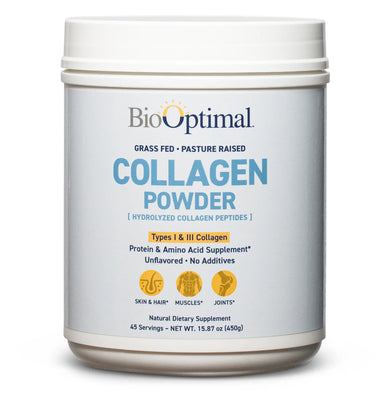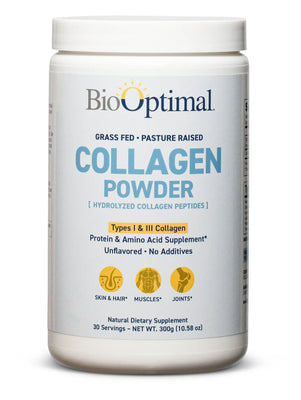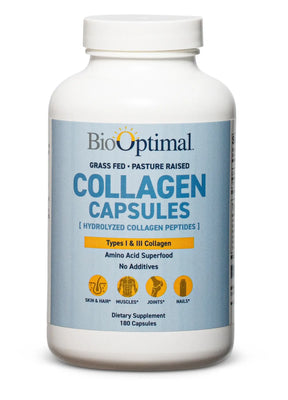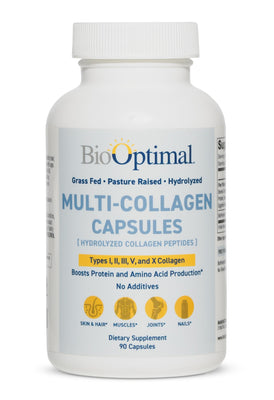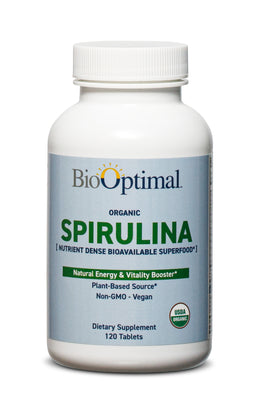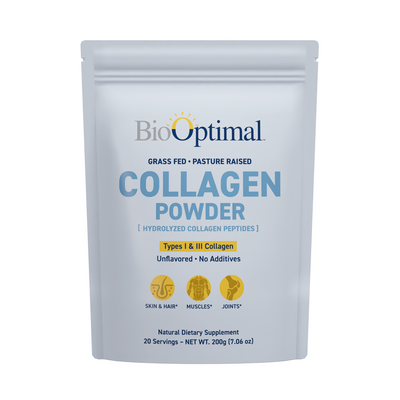Louis's takeaways:
Both blue and green spirulina offer powerful health benefits—but choosing the right one depends on your goals. Go for green spirulina if you want a complete superfood packed with protein, vitamins, minerals, and detoxifying chlorophyll. Choose blue spirulina if you're looking for a potent antioxidant boost with a neutral taste and vibrant visual appeal. For maximum benefits, many health-conscious users incorporate both into their diet for a broader nutritional spectrum.
Table of Contents:
Spirulina is a popular superfood known for its impressive nutritional profile and health benefits. It’s a blue-green algae packed with protein, vitamins, minerals, and antioxidants—however, many wonder which is better when choosing between blue and green spirulina.
In the debate of blue spirulina vs green, it’s essential to know their differences. Blue spirulina is an extract of phycocyanin, the pigment that gives spirulina its vibrant blue color. It has potent antioxidant properties and is often used as a natural food coloring. On the other hand, green spirulina is the whole algae, containing all the nutrients, including chlorophyll, proteins, and essential vitamins.
This article compares blue spirulina vs green spirulina by examining their benefits, nutritional profiles, and uses, helping you make an informed choice for your health needs.
SUMMARY:
Blue spirulina is an antioxidant-rich extract primarily used for color and health benefits, while green spirulina is the whole algae offering a full spectrum of nutrients. This article explores their differences to help you choose the right one for your wellness goals.
Understanding Spirulina
Spirulina is a blue-green algae known for its rich nutritional content and health benefits. It grows in freshwater and saltwater environments and has been consumed from the time of ancient civilizations like the Aztecs. Today, it’s recognized worldwide as a powerful dietary supplement. When comparing blue vs green spirulina, it’s important to note that it is an extract rich in phycocyanin. In contrast, green spirulina is an algae containing chlorophyll and other nutrients.
A common question is, "Does spirulina have a taste?" Green spirulina has an earthy, slightly seaweed-like flavor, while blue spirulina has a milder taste, making it more versatile in smoothies and foods. In the debate of spirulina vs chlorophyll, green spirulina stands out because it contains chlorophyll, which is known for detoxifying properties, while blue spirulina does not. Spirulina’s nutritional power continues to drive its popularity in health and wellness.
What is Green Spirulina?
Green spirulina is an algae that grows naturally in freshwater lakes, ponds, and rivers. It thrives in warm, alkaline water and is harvested mainly from Africa, Asia, and Central America. Unlike blue spirulina, an extract, green spirulina is the whole algae, retaining all its natural nutrients.
Green spirulina is renowned for its high protein content, making up about 60-70% of its weight, which is ideal for vegetarians and vegans seeking plant-based protein. It has essential vitamins, like B1 (thiamine), B2 (riboflavin), B3 (niacin), and K, supporting energy production, brain function, and blood health. Additionally, it provides vital minerals like iron, calcium, magnesium, potassium, and zinc, contributing to immune support and bone health.
One of its unique features is the presence of chlorophyll, which aids in detoxification, and powerful antioxidants like beta-carotene and zeaxanthin, protecting against oxidative stress.
SUMMARY:
Green spirulina is a nutrient-dense algae rich in plant-based protein, essential vitamins, minerals, chlorophyll, and antioxidants—making it ideal for detoxification, immune support, and overall wellness. Unlike blue spirulina, it retains all parts of the algae.
What are the Health Benefits of Green Spirulina?
Green spirulina is rich in antioxidants, including beta-carotene and zeaxanthin. It also contains phycocyanin, a potent anti-inflammatory compound that reduces inflammation and fights free radicals. Blue and green spirulina contain phycocyanin, but green spirulina also has chlorophyll, improving its antioxidant power.
Supports Immune Function
Green spirulina boosts immune health by stimulating the production of antibodies and uplifting the activity of natural killer cells. It has B1, B2, B3, and K) and minerals like zinc further support the immune system. In the debate of green vs blue spirulina, green spirulina stands out due to its complete nutrient profile, which promotes overall immunity.
May Lower Cholesterol Levels
Studies suggest that green spirulina may minimize LDL (bad) cholesterol while improving HDL (good) cholesterol. This can prevent heart disease. Its antioxidant and anti-inflammatory properties also support cardiovascular health by taking care of blood vessels from oxidative stress.
Potential Detoxification Effects
One unique benefit of green spirulina is its high chlorophyll content, which supports detoxification by helping the body eliminate heavy metals. In contrast, blue spirulina lacks chlorophyll, making green spirulina a better choice for detox purposes.
Common Uses and Forms
Green spirulina is versatile and available in various forms, including powder, tablets, and capsules. It blends with smoothies, juices, and baked goods. Its earthy flavor is more pronounced than blue spirulina, but its comprehensive nutritional benefits make it a popular choice for daily supplementation.
SUMMARY:
Green spirulina supports immunity, heart health, and detoxification thanks to its rich antioxidant, vitamin, and chlorophyll content. It’s available in powders, tablets, and capsules, making it a versatile and nutrient-dense supplement choice.
What is Blue Spirulina?
Blue spirulina is an extract derived from green spirulina, explicitly containing the pigment phycocyanin, which gives it its vibrant blue color. Unlike green spirulina, blue spirulina doesn’t contain chlorophyll or the complete nutrient profile of the whole algae. Instead, it’s a concentrated source of phycocyanin, known for its powerful antioxidant and anti-inflammatory properties.
Blue spirulina is rich in antioxidants that help protect cells from oxidative stress. It also provides some immune-boosting micronutrients, including vitamins C and E, supporting immune health and skin vitality. Although it lacks the full spectrum of vitamins and minerals in green spirulina, it’s popular for its mild taste and eye-catching color.
Blue spirulina, usually in powder form, is available from various sources- both online and offline. It is also used as a natural food coloring in smoothies, lattes, and desserts, adding nutrition and a stunning blue hue.
How is Blue Spirulina Beneficial?
Blue spirulina is a versatile addition to your diet. Understanding its advantages over green spirulina can help you decide which type best suits your health goals.
Potent Antioxidant Effects
Blue spirulina is a powerful antioxidant due to its high phycocyanin concentration, the pigment responsible for its vibrant blue color. Phycocyanin helps neutralize free radicals, protecting cells from oxidative stress and reducing inflammation. Blue spirulina and green spirulina offer antioxidant benefits, but blue spirulina provides a more concentrated dose of phycocyanin, making it particularly effective for combating oxidative damage.
May Support Muscle Recovery
Blue spirulina is popular among athletes and active individuals for its potential to aid muscle recovery. Its antioxidant properties help reduce exercise-induced oxidative stress and inflammation, speeding up muscle repair. Additionally, it provides a small amount of protein and essential amino acids that support muscle maintenance and recovery. Blue spirulina is preferred for post-workout recovery due to its potent anti-inflammatory effects when debating green vs blue spirulina.
Potential Anti-Cancer Properties
Some research suggests that phycocyanin in blue spirulina may have anti-cancer properties. It inhibits cancer cell growth and promotes apoptosis (programmed cell death) in abnormal cells. Although more studies are needed, these findings highlight the potential of blue spirulina as a supportive supplement in cancer prevention.
Common Uses
Blue spirulina is widely used as a natural food coloring as it has a bright blue hue and neutral taste. It’s popular in smoothies, lattes, and desserts, adding a vibrant color without artificial dyes. You can find blue spirulina at Whole Foods and other health stores, typically in powder form. Its versatility and eye-catching color make it a favorite among health-conscious consumers and culinary enthusiasts.
SUMMARY:
Blue spirulina is a phycocyanin-rich superfood known for its strong antioxidant and anti-inflammatory benefits, muscle recovery support, and potential anti-cancer properties. Its vibrant color and neutral taste make it a popular natural food coloring in smoothies and desserts.
Key Differences Between Blue and Green Spirulina
The following are certain factors based on which green vs. blue spirulina is differentiated:
Processing Methods: Whole Algae vs. Extracted Pigment
Green spirulina is a whole algae containing all its natural nutrients, including chlorophyll, vitamins, minerals, protein, and antioxidants. It undergoes minimal processing, typically drying and powdering.
Blue spirulina is an extract that isolates phycocyanin, the pigment responsible for its vibrant blue color. It doesn’t contain chlorophyll or the complete nutrient profile of green spirulina.
The main difference between green and blue spirulina is their processing methods and nutrient composition.
Taste and Sensory Differences
Green spirulina has an earthy, seaweed-like taste that some people find pungent and slightly bitter. Blue spirulina has a milder, neutral flavor, making it more versatile in culinary applications. This flavor difference often influences the choice of “Is blue spirulina better than green?” for taste-sensitive individuals.
Nutrient Density and Specific Health Benefits
Green spirulina is richer in protein, chlorophyll, vitamins (B1, B2, B3, K), and minerals (iron, calcium, magnesium, zinc). It supports detoxification, energy production, and immune health. Blue spirulina is more concentrated in phycocyanin, providing potent antioxidant and anti-inflammatory effects, but lacks chlorophyll and some vitamins found in green spirulina.
Culinary Applications and Visual Appeal
Green spirulina is commonly used in smoothies, juices, and supplements for its nutritional benefits. Its green color may affect the appearance of foods. Blue spirulina is favored as a natural food coloring in smoothies, lattes, desserts, and even baked goods due to its vibrant blue hue and neutral taste.
Potential Risks and Side Effects
One must also consider the potential side effects while choosing spirulina supplements:
Possible Contamination with Toxins
If not appropriately sourced, spirulina (both green and blue) can be contaminated with heavy metals, microcystins, and harmful bacteria, posing health risks. Always choose spirulina from high-quality, reputable sources to ensure safety and purity.
Allergic Reactions in Susceptible Individuals
Some people may experience allergic reactions to spirulina, such as itching, hives, or digestive discomfort. A small dose is recommended to test for any allergic response.
Considerations for People with Autoimmune Conditions
Spirulina may stimulate the immune system, which could be problematic for people with autoimmune diseases like multiple sclerosis, lupus, or rheumatoid arthritis. Those with autoimmune conditions must get in touch with healthcare provider to use spirulina.
Importance of Choosing High-Quality, Reputable Sources
To minimize risks, opt for spirulina products that are:
- Certified organic and tested for contaminants.
- Sourced from reputable brands with transparent quality control processes.
- Free from additives or fillers.
The safety concerns are similar when comparing green and blue spirulina, as both forms require proper sourcing to avoid contamination. Whether you’re exploring the difference between green and blue spirulina or wondering, “Is blue spirulina better than green?” Always prioritize product quality and safety.
How to Choose Between Blue and Green Spirulina
Choose green spirulina if you want a complete nutrient profile, including protein, vitamins (B1, B2, B3, K), minerals, and chlorophyll. It’s ideal for detoxification, immune support, and overall nutrition. Opt for blue spirulina if you focus on antioxidant and anti-inflammatory benefits, as it contains concentrated phycocyanin. The benefits of blue spirulina powder include better recovery after exercise and vibrant blue food coloring.
Taste Preferences and Culinary Uses
A common question is, “Does blue spirulina have a taste?” Blue spirulina has a neutral flavor, making it easy to mix into smoothies, lattes, and desserts without affecting the taste. In contrast, green spirulina has an earthy, seaweed-like flavor, which some find overpowering. If you’re curious, “What does blue spirulina taste like?” It’s much milder and more versatile for culinary use.
Availability and Cost Considerations
Blue spirulina is often more expensive due to its extraction process. Green spirulina is more widely available and generally more affordable. Choose based on budget and availability at local health stores or online.
SUMMARY:
Choose green spirulina for full-spectrum nutrition and detox support, while blue spirulina is best for antioxidants, mild taste, and vibrant food coloring. Blue is pricier, but green is more affordable and widely available.
Incorporating Spirulina into Your Diet
Here are some practical tips for incorporating spirulina into your meals and beverages.
- Green spirulina works well in smoothies, juices, and savory dishes but has a stronger flavor.
- Blue spirulina is ideal for brightening foods like smoothie bowls, lattes, and desserts without changing the taste.
- Start with 1-2 teaspoons of powder or 1-2 tablets daily, gradually increasing the dosage if tolerated well.
- Blue spirulina powder is popular for its vibrant color and mild taste, while green spirulina is available in powder, tablets, and capsules.
Recipe Ideas and Suggestions
- Add to green smoothies, energy balls, or salad dressings for green spirulina.
- For blue spirulina: Try in blue smoothie bowls, blue lattes, or mixed into yogurt for a colorful, nutrient-rich boost.
Experiment with both to find the best way to enjoy the health benefits while uplifting your meals visually and nutritionally.
Wrapping up
Both blue and green spirulina offer unique health benefits, but the best choice depends on your needs and preferences. Green spirulina provides a complete nutrient profile with protein, vitamins, minerals, and chlorophyll, making it ideal for nutrition and detoxification. On the other hand, blue spirulina is rich in phycocyanin, offering powerful antioxidant and anti-inflammatory properties with a mild taste and vibrant color.
When deciding between blue and green spirulina, consider your health goals, taste preferences, and budget. Feel free to experiment with both types in different recipes to see which suits you best. If you have any questions or want to share your experience, we’d love to hear from you in the comments section.
To get started with high-quality spirulina, check out BioOptimal Supplements. They offer trusted, nutrient-rich products to support your health and wellness journey.
Frequently Asked Questions
1. What is the difference between blue and green spirulina?
Blue spirulina is a pigment extract (phycocyanin), while green spirulina is the whole algae containing protein, vitamins, and minerals.
2. Is blue spirulina better than green spirulina?
It depends on your health goals—blue spirulina is rich in antioxidants, while green spirulina offers a complete nutritional profile.
3. What are the benefits of blue spirulina?
Blue spirulina supports immunity, reduces inflammation, and provides powerful antioxidant protection.
4. What are the health benefits of green spirulina?
Green spirulina aids in detoxification, supports muscle recovery, boosts energy, and is rich in protein and iron.
5. Can I take blue and green spirulina together?
Yes, combining both can offer a wider range of nutrients and health benefits.


